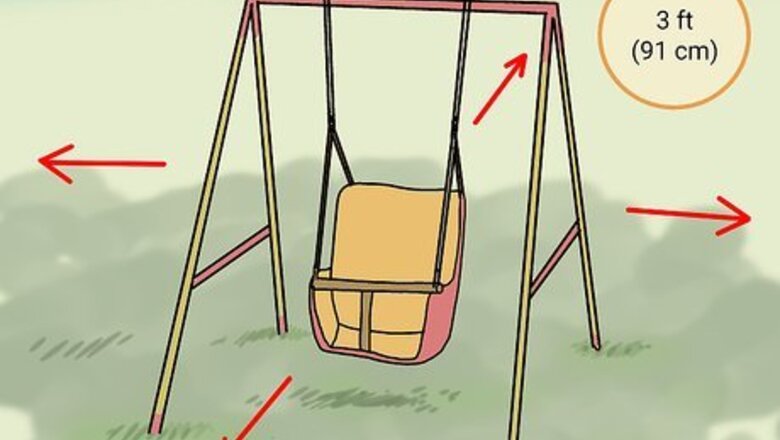
views
X
Research source
For maximum comfort and safety, though, it’s important to choose a good swing location and to secure the swing in place properly. Fortunately, with a sturdy support to hang from and a few DIY skills on your part, your baby swing will be ready to keep your bundle of joy happy for months to come!
Safety Measures
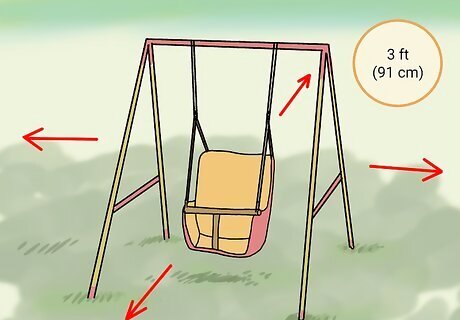
Choose a location with ample space, shade, and soft ground. For your child’s safety, there should be at least 3 ft (91 cm) of open space on all sides around the spot where you plan to put the swing. If you’re setting up the swing outdoors, it’s also preferable to find a spot that isn’t in direct sunlight, which may make the swing too hot for your baby’s comfort. If you set up the swing properly, there’s very little chance of any kind of accident happening. That said, it’s best to set up the swing over soft ground—like a grassy area or a mulch bed—in case of a swing failure or a fall.
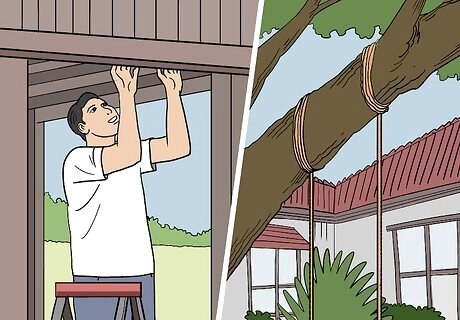
Check the sturdiness of the beam or branch you want to use. If you plan to hang the swing in an interior doorway, make sure you drill and drive the anchors into the framing structure, not just the finish trim. If you’re hanging from an outdoor structure, such as on the underside of an elevated deck, make sure to identify a sturdy structural beam that can easily hold the weight of your child and the swing. Any structural beam that is at least 2 by 4 in (5.1 by 10.2 cm) in dimensions and that is not warped or damaged should easily be able to hold the weight of a baby in a baby swing. Just to be sure, when you’re done hanging the swing, place a baby-equivalent weight (such as rocks or a bag of sand) in the swing for at least 10 minutes. Hanging a baby swing from a tree branch requires special precautions. Find a sturdy, primarily-horizontal limb that’s at least 6 in (15 cm) thick, solid, leaf-bearing, and easily accessible by you. Don’t use a dead limb, nor one that sounds hollow, looks weak or damaged, or flexes when you apply force to it. Avoid fruit trees, since they usually have flexible and weak branches.
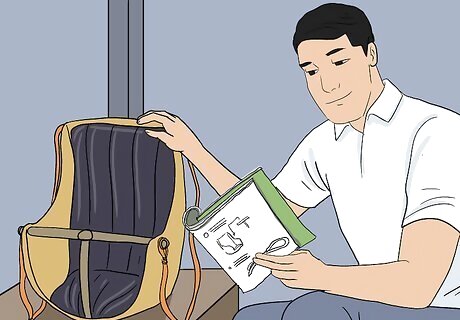
Follow the specific installation instructions for the swing you purchased. While the general hanging instructions provided in this article will work for most models of baby swing, you should always refer to the product guide for detailed and specific instructions. While it’s possible to make your own baby swing, it’s safer to buy a new—not used—one from a reputable manufacturer and retailer. Before buying, make sure the swing is intended for your baby’s age and weight range.
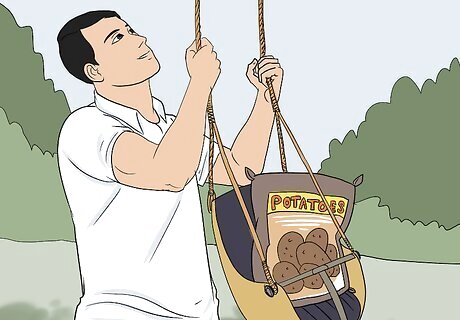
Test the swing after install to confirm it can hold your child’s weight. Don’t test the swing out by putting your baby in it! Instead, find something that’s at least equal in weight—a sack of potatoes, several bricks, etc. Push the swing several times, as if you’re swinging your child, then leave the weight in the swing for at least 10 minutes. After 10 minutes, check every component—swing seat, nylon ropes, S-rings, carabiners, eyelet screws, hanging beam, etc.—for signs of strain, wear, or damage. If the swing moves freely and you see no signs of damage or wear to any of the components, it’s ready for use.
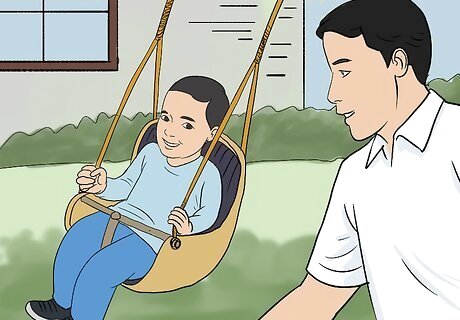
Watch your baby in the swing for sessions lasting no more than 30 minutes. Resist the temptation to put your baby in the swing so you can walk away and get some things done. Even if your child is properly secured in a properly-installed swing, adult supervision is essential. Yes, you can multi-task a little, but make sure to frequently engage with your child during a swinging session that should last no longer than 30 minutes. Why 30 minutes? Longer sessions may result in a flattening of the back of your baby’s developing skull. Also, longer sessions increase the likelihood of your baby falling asleep, and experts do not recommend allowing babies to sleep in swings. Unfortunately, reclined sleeping in things like swings, strollers, and carriers increases the risk of sudden infant death syndrome (SIDS).
Anchored Setup
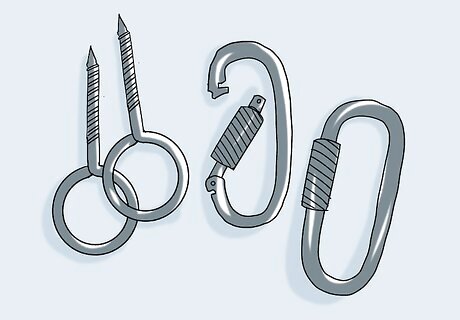
Buy strong eyelet screws and threaded carabiners to anchor the swing. Head to your local hardware store and buy 2 eyelet screws and 2 threaded carabiners. Before buying, check the packaging or the items themselves and confirm that they are rated to hold more than the combined weight of your child and the swing. If you want to create a pair of permanent anchor points for your swing, but also want to be able to put up or take down the swing quickly, choose this installation method. An eyelet screw has a closed ring at the head, not an open hook. A threaded carabiner (also called a quick link or maillon) has a stronger “gate” closure than a spring-loaded carabiner.

Mark 2 pilot holes 3 in (7.6 cm) wider than the swing’s width. Setting the anchor points slightly wider than the swing width results in a smoother swinging motion. Measure the width of the swing between the connection points of its attached nylon ropes, add 3 in (7.6 cm), and transfer this measurement to the hanging beam or limb. You have a bit of “wiggle room” here—it’s okay so long as the drill holes are between 2–4 in (5.1–10.2 cm) wider than the swing.
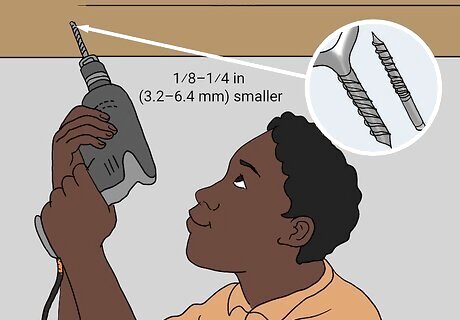
Drill with a bit that’s ⁄8–⁄4 in (3.2–6.4 mm) smaller than your eyelet screws. Start with a drill bit that’s ⁄4 in (6.4 mm) smaller in diameter than the diameter of the eyelet screws. Load the bit into your drill, press the tip of the bit against one of your anchor markings, drill a straight pilot hole to the depth of the bit, reverse the drill to withdraw the bit, and repeat at the other marking. If you find it too difficult to twist in the eyelet screws, widen the pilot hole slightly with a bit that’s ⁄8 in (3.2 mm) smaller than the screws. The drill bit’s diameter needs to be smaller than that of the eyelet screws so that the screws’ threads can take a secure hold into the material you’re drilling into.
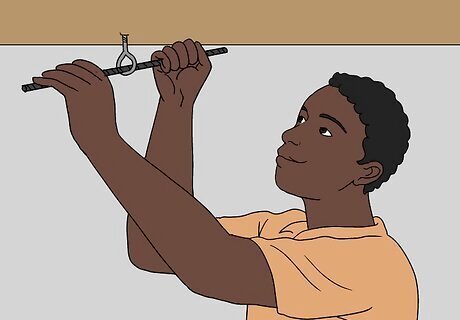
Twist in the eyelet screws completely, using a pipe or rod for extra torque. Insert the tip of one of the screws into a pilot hole and start twisting the ring-shaped end of the screw clockwise. If this gets difficult to do by hand, thread a length of sturdy metal pipe or reinforcing bar (rebar) through the eyelet hole. Grab each end of the pipe or pole and twist with both arms to create significantly more torque. Keep twisting the screws until the threads are no longer visible. Inserting the screws only part of the way significantly reduces their weight-bearing capacity. Once the threads are no longer visible, adjust the screws so that the eyelet openings are facing in the direction the swing will move. (In other words, if the eyelets were real eyes, they’d be looking forward, not to the sides.)
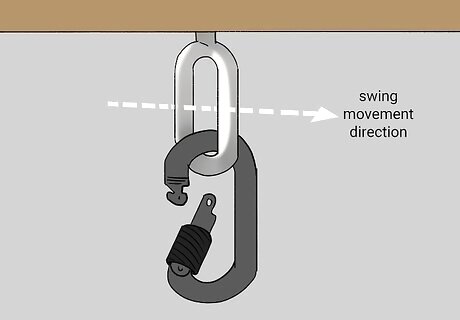
Hook the threaded carabiners over the exposed rings of the eyelet screws. When open, a threaded carabiner looks like a letter C. For the time being, simply hang the carabiners off of the eyelet screws—don’t close the carabiners yet. Because the eyelet openings are pointed in the direction the swing will move, the (currently open) rings of each carabiner should be perpendicular to the direction of swing movement.
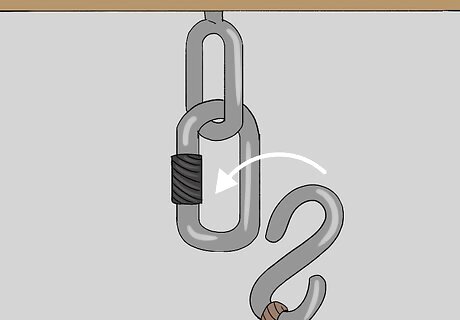
Slip the S-hooks at the ends of the swing’s ropes into the open carabiners. Most baby swings come with pre-installed, metal, modified S-hooks at the ends of the nylon swing ropes. They still look a bit like a letter S, but with an elongated top section. Slide the lower sections of the C-shaped carabiners through the openings at the tops of the modified S-hooks. The S-hooks have a modified shape that makes it nearly impossible for them to slip off of whatever you hang them from. This is a good thing for baby swing hardware, but it also means that it’s very difficult to remove the hooks if you connect them directly to eyelet screws. Installing threaded carabiners between the eyelet screws and S-hooks solves this problem without sacrificing safety. If your swing only has nylon ropes and no S-hooks, do the following: twist the eyelet screws 90-degrees so that the “eyes” are facing perpendicular to the direction of swing travel; then, slip the nylon ropes into the openings of the carabiners.
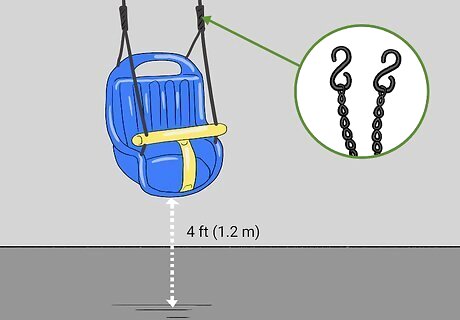
Check the height of the swing and use sturdy chains to lower it if needed. For your own comfort, the seat of the swing should be approximately 4 ft (1.2 m) above the floor or ground. If the swing is too high (and the nylon ropes aren’t adjustable), buy 2 lengths of linked metal chain that are sufficiently weight-rated (that is, can hold more than the combined weight of the swing and child) and are each as long as the distance you want to lower the swing. To install the chains: Remove the swing’s S-hooks from the carabiners. Hook a complete link at the end of one of the chains over one of the open carabiners; do the same with the other chain. Hook the swing’s modified S-hooks over the complete links at the dangling ends of the chains.
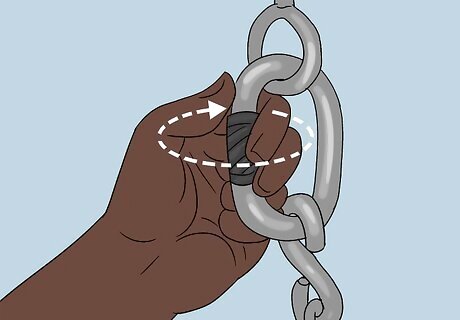
Close the carabiners tightly by twisting the gates completely over the threads. As you twist the cylindrical gate clockwise, it will spin onto the threads on the other side of the carabiner’s opening. Keep twisting the gate until the threads are completely concealed. Repeat with the other carabiner. Spring-loaded carabiners aren’t necessarily unsafe for this application, but threaded carabiners are definitely the safer choice.
Temporary Setup

Buy a tree swing hanging kit for the easiest temporary setup option. These hanging kits typically include a pair of thick nylon straps, each with a loop at one end and a carabiner at the other. They’re plenty sturdy to hold a baby swing, and normally cost around $30 USD. Alternatively, consider one of the following options: Vehicle tow straps. Since a single strap is rated to pull a car, a pair of straps can certainly hold up a baby swing! These work in essentially the same manner as a swing hanging kit, and cost roughly the same. Thick, sturdy ropes. Choose a braided rope that’s rated to hold more than the weight of your child and swing, and tie 2 lengths of it to the branch or beam with bowline or rolling hitch knots. Use the same knots to tie the rope to the swing or to carabiners that connect to the swing. Check the knots and the rope’s condition regularly.
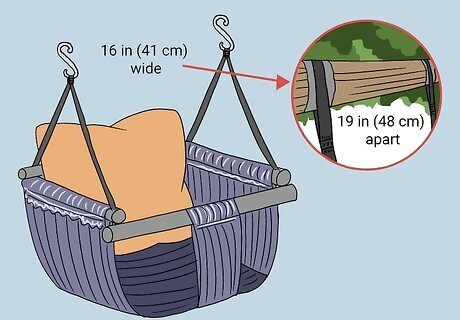
Mark the locations for the swing kit’s straps on the branch or beam. To help the swing move more smoothly, make the space between the straps about 3 in (7.6 cm) wider than the width of the swing. For instance, if the swing is 16 in (41 cm) wide, mark the spots for the straps at about 19 in (48 cm) apart.
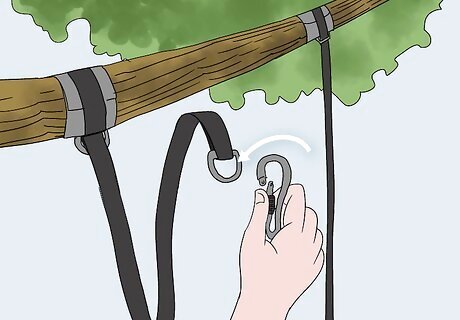
Feed the carabiners through the loops to cinch the straps to the beam or branch. Take one of the straps and drape the looped end over the beam or branch. Feed the end of the strap with the attached carabiner through the loop, then keep pulling until the strap is cinched up tight around the beam or branch. Repeat the process with the other strap. Don’t let the strap twist or tangle, as this can reduce its holding strength. Keep in mind that these are general instructions. Always follow the specific instructions that came with the kit you purchased.
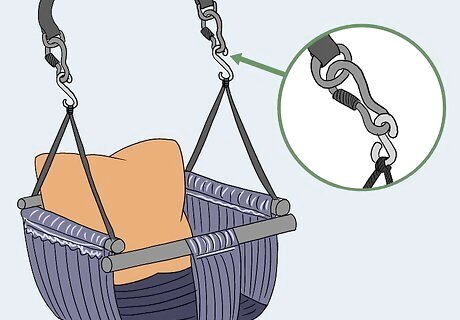
Clip your swing’s S-hooks into the carabiners on the straps. Feed the elongated top portions of the swing’s modified S-hooks into the openings of the threaded carabiners. Twist the cylindrical gates clockwise to fully and securely close the carabiners. After testing the swing with an equivalent weight, it should be ready for your baby! To remove the swing, simply undo the carabiner gates. To remove the straps, feed the carabiner end of each strap up through its loop.













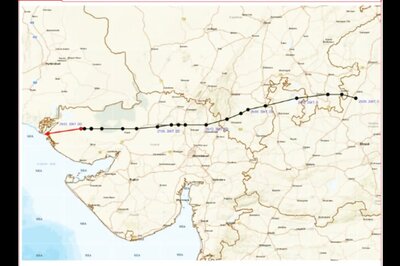





Comments
0 comment